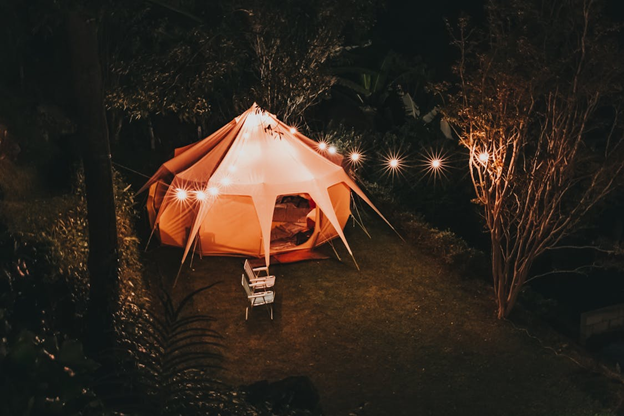For those who love the great outdoors, camping often means embracing nature while staying somewhat connected. Whether it’s charging your phone, powering a small fridge, or running LED lights, portable power solutions have become essential.
However, with great power (even the portable kind) comes great responsibility. Ensuring you use these DIY portable power setups safely is crucial for both your well-being and the longevity of your equipment. This blog will talk about how to safely use DIY portable power during your camping trips.
Why Portable Power Matters for Campers
Portable power solutions offer campers the flexibility to stay off-grid while keeping necessary devices running. These solutions can help campers in the following ways:
- Charge essential devices like phones, GPS units, or emergency radios
- Power lighting for safer nighttime navigation around your campsite
- Run small appliances like electric coolers or portable fans
- Support CPAP machines or medical devices for those with special needs
- Enable photography or videography by powering cameras and drones to capture stunning landscapes
- Recharge headlamps and lanterns to ensure you’re never left in the dark
But how do you ensure you’re using these setups safely? Let’s break it down.
Choosing the Right Portable Power Setup
When it comes to DIY portable power, your setup often involves a combination of battery boxes, solar panels, and inverters. One of the smartest investments you can make is a high-quality battery box.
Battery boxes aren’t just about convenience. They’re also about protecting both your battery and your gear.
A high-quality battery box can help you in the following ways:
- Protecting your battery from physical damage, water exposure, and extreme temperatures
- Offering secure power outlets with built-in fuses and circuit breakers
- Providing easy transport of your battery without risking short circuits
- Organizing cables and accessories to prevent tangled messes and accidental disconnections
When selecting a battery box, look for options with multiple output ports (USB, DC, and AC), an LCD display showing charge levels, and sturdy, weather-resistant construction.
DIY Portable Battery Safe Setup and Usage Tips
As with any electrical set-up, it’s important to keep safety at the forefront of your mind when setting everything up. Keep these safety tips in mind to ensure everything runs smoothly:
- Read the Manuals: Each component, including the battery box, inverter, and solar panel, comes with specific operating instructions. Read through the instructions to prevent accidents.
- Location Matters: Set up your battery box on a flat, dry surface, away from direct sunlight or potential rain puddles.
- Ventilation is Key: Batteries can generate heat while charging or discharging. Ensure your setup has proper airflow to avoid overheating.
- Protect from Moisture: Even if your battery box is water-resistant, avoid exposing it to heavy rain. Consider using a small tarp or canopy for extra protection.
- Avoid Overloading Circuits: Check the power ratings for each device. Overloading your inverter or battery box can cause short circuits or damage your gear.
- Use Proper Cables and Connectors: Frayed cables or mismatched connectors can be dangerous. Always use compatible, high-quality cables designed for outdoor use.
- Monitor Power Levels: Regularly check your battery’s charge level using the built-in display or a multimeter. Don’t drain it completely – lithium and deep-cycle batteries last longer when kept above 20% charge.
- Secure Your Setup: Ensure your battery box and other power components are securely anchored, especially in windy conditions, to prevent tipping or damage.
Even with the best planning, things can go wrong. Be prepared by keeping these tips in mind:
- Packing a fire extinguisher rated for electrical fires
- Carrying backup power sources like small solar chargers or extra batteries
- Knowing how to disconnect your setup quickly in case of a malfunction
- Keeping emergency contact numbers and first-aid supplies within easy reach
Final Thoughts
Portable power solutions make modern camping more comfortable and safe, but only if used responsibly. Investing in a high-quality battery box and following best practices ensures your DIY setup remains reliable. By balancing preparedness with a love for the outdoors, you can enjoy your adventures without sacrificing safety.
Partner Content
The above article is paid content, and any information presented should be independently verified before making any decisions as a result of the content. This article does not constitute advice of any kind, nor does it represent the opinions of the website publisher.

